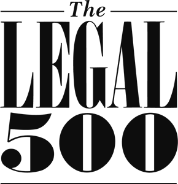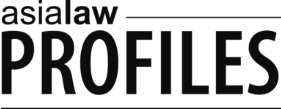On March 2, 2010, the Securities and Futures Commission ("SFC") released its Consultation Conclusions on Increasing Short Position Transparency ("Consultation Conclusions"). The Consultation Conclusions outline imminent proposals to introduce subsidiary legislation which will establish new obligations for market participants to disclose short positions.
SUMMARY OF PROPOSALS
The SFC intends to release proposed language for the subsidiary legislation in a separate future consultation. In the meantime, in broad terms, the proposed subsidiary legislation will require a market participant to disclose at the beginning of each week material short positions held by them at the close of trading at the end of the previous week.
For this purpose, a material short position is a gross short position which exceeds 0.02 per cent. of the market capitalization of the company or the value of which exceeds HK$30 million.
- Limited universe of stocks – Short positions will only include short positions in companies comprised in the Hang Seng Index or the H-Shares index and short positions in financial companies. Short positions otherwise of companies listed on the Stock Exchange of Hong Kong ("SEHK") will not count as short positions.
- No derivatives – Short positions will only include short positions in the physically settled cash market. Synthetic short positions arising from derivatives trades will not count as short positions.
Once disclosed, the SFC will release short position data to the public on an aggregated no-names basis though it will delay implementation of public disclosure for the first few months.
CURRENT LAW
The current law provides for short selling transparency in 2 principal ways, namely transaction reporting and position reporting.
Transaction Reporting
The Securities and Futures Ordinance ("SFO") creates a transaction reporting system which requires all persons handling a short sale order for execution on the SEHK to notify the executing broker that the order is a short sale and all traders executing short sale orders on the SEHK to input the order as a short sale.
Disclosure of Interests Regime
The SFO also establishes a disclosure of interest regime. This regime includes a position reporting system which requires (i) persons (i.e. substantial shareholders) who have an interest of 5 per cent. or more in the relevant share capital of a company listed on the SEHK to notify the SEHK of any short position of 1 per cent. or more, and (ii) directors and chief executives of a company listed on the SEHK to notify changes in any short position they have.
Limitations in Existing Law
The current law provides only limited short position transparency. The requirement for office in a company or an initial 5 per cent. threshold interest in the relevant share capital of a company as a pre-condition to short position reporting sets a high reporting threshold in practice. A market participant who does not borrow at least 5 per cent. of the relevant share capital is unlikely to trigger any reporting obligation.
At the same time, the requirement for short sales executed on the SEHK to be marked as such does not provide short position transparency. A short sale does not necessarily result in a short position (e.g. the seller has a long position through a derivative) and a short sale may be offset by a buy order which is not subject to any disclosure obligation.
LIMITATIONS IN NEW PROPOSALS
While the proposed subsidiary legislation will increase transparency on short-selling by providing aggregate disclosure of selected short positions, transparency gains are in some ways limited.
The proposed subsidiary legislation will only apply to shares of companies comprised in the Hang Seng Index or the H-Shares Index and short positions in financial companies. In this regard, the Consultation Conclusions note that Hang Seng Index and H-Share Index constituents comprised at the end of 2009 approximately 70 per cent. of the SEHK's market capitalization. However, the constituents of the Hang Seng Index and H-Share Index represent less than 10 per cent. of all companies listed on the SEHK, there being about 1,145 companies listed on the SEHK at the end of 2009.
At the same time, the proposed subsidiary legislation will only apply to short positions in the physically settled cash market in Hong Kong. It is unknown the extent to which short positions are currently held synthetically or otherwise off the SEHK. The limited application of the proposed subsidiary legislation contrasts with recommendations in other jurisdictions to include derivatives within a short position reporting regime.
It is unclear to what extent the new subsidiary legislation would achieve its goal of increased transparency due to the ability to take short positions through derivatives and the exclusion of the majority of the stocks traded on the SEHK.
Drawbacks of New Proposals
The administrative burden of increased transparency is high. As noted above, the SFC proposes to trigger short position reporting obligations under the new proposed subsidiary legislation where a short position in a company exceeds 0.02% of the issued share capital of the company or HK$30 million in value.
The 0.02% threshold is much lower than the thresholds suggested by various organizations representing the investment banks and alternative investment funds and is much lower than the threshold recommended in Europe. The SFC takes the view that this figure is appropriate given the exclusion of derivatives from the short position reporting regime and the specific characteristics of the Hong Kong market.
Unclear Need for Short Position Transparency
Whilst there is a clear international trend towards short position reporting, the SFC cites no evidence of any need for a short position reporting regime. The original consultation suggests that the regime will provide early warning of large short positions that may be potentially disruptive to the orderly functioning and stability of markets, improve insight into market dynamics, deter abusive short selling behaviour and provide evidence that may aid post-event enforcement action.
In this regard, it is significant to note that Hong Kong already has substantial tools in place to regulate short selling. In addition to the transparency measures described above, Hong Kong currently prohibits naked short selling on the SEHK, requires an audit trail that short sales are covered, requires short sales on the SEHK to be made at the current best asking price or better and limits short sales on the SEHK to designated securities.
At the same time, under current law, Hong Kong has an ample arsenal to investigate short selling. The SFC has extensive statutory investigation powers that over-ride the privilege of self-incrimination and enable the SFC to identify buyers and sellers in any given share or derivative traded on the SEHK over a period of time and the extent of their long or short position at any given time. In the event that buyers and sellers are located beyond the territorial jurisdiction of Hong Kong, the SFC has long required licensed and registered brokers, who are within the territorial jurisdiction of Hong Kong, to have in place contractual arrangements with their clients which enable the SFC to identify the person ultimately responsible for originating any order, including a short sale order, and the person ultimately bearing the economic benefit or burden of any order.
In parallel, the Hong Kong government through the Financial Secretary has specific statutory powers to identify the persons who have short positions in companies listed on the SEHK, whether through shares or derivatives.
There is no real suggestion that the current regulatory framework was in any way proven inadequate in the recent financial crisis.
Unclear Need for Separate Parallel Regime
The Consultation Conclusions do not discuss why the SFC seeks to establish a new parallel short position reporting regime outside of the current law. It is no doubt true that there would be costs in modifying information technology systems designed to accommodate Hong Kong's complex disclosure of interest regime. However, to the extent that the current position reporting regime may be regarded as inadequate, it may be desirable to modify the regime so that it is adequate and simpler to understand rather than to leave it in place and supplement it with another regime which may add further complexity to an already highly complex situation.
IMMEDIATE FUTURE
The SFC has yet to introduce subsidiary legislation. Market participants concerned about the new proposals may still take steps to voice these concerns. In particular, whilst the SFC has the power under existing securities laws to introduce subsidiary legislation to implement its short position reporting regime, such subsidiary legislation is subject to negative vetting by the Legislative Council. As a result, the Legislative Council may modify the subsidiary legislation as it deems fit.












